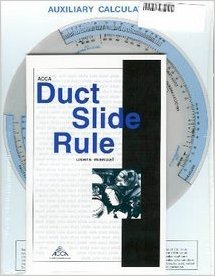
Hot weather increases HVAC repair and replacement calls like rain sells umbrellas. But let’s hope the difference ends there. You wouldn’t expect customers to drive across town to their favorite umbrella store. But you do expect them to call you for their repairs and replacements. Is this a wise expectation? Let’s take a look.
“Why wouldn’t my customer call me?” you ask. “I helped him out a couple years ago, and told him to call me again if he needed me. We even shook hands.” Yeah, right. He’s only seen about 120,000 ad messages since, and yours probably wasn’t one of them. Did you send a thank-you card? A newsletter? Targeted mailing? Telephone follow-up? If your answer is no, future sales are a longshot at best.
I’ll let you in on a little secret. Warm weather marketing is not only intended as a tool for snagging new customers — it is for marketing to your current customers, too. Or, should I say, you should try marketing to what you think of as your current customers. (With more than a year and no contact, your “customers” almost certainly don’t consider themselves as such!)
Now, if you sent a customer retention newsletter in the spring, congratulations. You’ve taken an important step in building a customer relationship that results in repeat calls. That’s the idea. But last quarter’s preseason marketing push doesn’t take the place of this month’s need to keep your name out there.
Your competition will be out there. You need to be there too. Just think — one replacement system sale yanks your customer out of the market for 10 years. That sounds like reason enough to market smarter instead of “just waiting” for the weather to hand you a bunch of demand-oriented price-shoppers.
Your mission is to keep your competition from getting that sale. Reminding people of your company name, your quality, your experience — and your phone number — is the way to do it.
Warm Weather Ads That Work
We’ve talked about how service ads should be low and direct response offers made only if sales don’t cooperate or if you’re in the “aggressive” mode. Otherwise, let all-purpose, image and TOMA ads work on your prospect’s minds. What’s the difference, you ask?All-purpose ads — Just like it sounds, these ads are for pushing a range of services and product offerings in a broad media from general publications to blanketing a neighborhood. Their intent is to cast a broad, all-encompassing net.
Image ads — Many people like to attach a “feeling” or a personality to a company, and image ads do just that. Sometimes it’s high-style image, as is often the case with perfume, jewels, or automobiles. Sometimes it’s bargain-basement image, as is the case with “Big Lots.” Some companies use mass appeal image, like with McDonald’s.
Your “image” is what you’d say characterizes your company as if it were a person. Many times an image and tagline will become embedded in the public’s mind. This perception can be very, very powerful. Here’s the bad news: You’re going to get an image, whether you intend to or not. To most of your market, your ads are the spokespeople for your company. A sloppy, unprofessional ad does not reflect well on the company. And if you tout “low prices” in your ads, don’t complain that you get a bunch of price-shoppers. The ad is “bait,” and the customers it catches are not coincidental.
TOMA ads — Commanding a position in someone’s mind is 70 percent of marketing’s intent. TOMA ads (the acronym stands for “top-of-mind awareness”) are for “trickling” your name in front of prospects as often as humanly possible, and in the case of your current customers, frequently reminding them of your credibility and professionalism. TOMA ads are usually quite small, and say very little – if anything — more than your company name. These can be “branding” ads, whereupon your brand becomes an identity unto itself.
The fact is, all advertising advances the cause of TOMA, but as in the case of our HVAC PowerPack, we focus them on customer retention. Seeing your company name in print helps market to the current customers you want to keep as much as it does to the new customers you want to draw.
My Top Ad Pick For Now
For a sheer lead generation message, I like trade-in ads (offering what marketers call a “qualified rebate”). You’ve got to have a strongly worded headline, a well-crafted “reason-why” argument, and sense of urgency to get the call. (There are 46 Direct Response examples in our HVAC Marketing PowerPack.)When it comes to the choice of media, I’m a direct mail fan. You can target your messages exactly, meter them out over a few weeks to control lead surges, and put them in a convenient part of the city to aid in cutting travel time. Plus, you can hand out copies to neighbors for free. Most importantly, it only takes about a 0.6 percent response rate and a 30 percent closing rate on $4,000 systems to get back 15 times your money. I like those odds. Sadly, the worst crime for most HVAC marketing is that their letters get a 0.2 percent response rate, so they give up. Let a direct response copywriter create your ads, and you’ll be mountains of money ahead.
Warm weather is great for business — if you play it smart. Don’t let the temperature cause you to let your marketing guard down. Push your name hard and often to keep the right calls coming all summer long.
Adams Hudson is president of Hudson, Ink. His company created the HVAC Marketing PowerPack, plus he creates custom ads, newsletters, and gives marketing seminars. News readers can get a free subscription to his “Sales & Marketing Insider” by faxing a copy of their company letterhead to 334-262-1115 with the request. For more information, call 800-489-9099 or visit www.hudsonink.com.
Publication date: 06/30/2003








